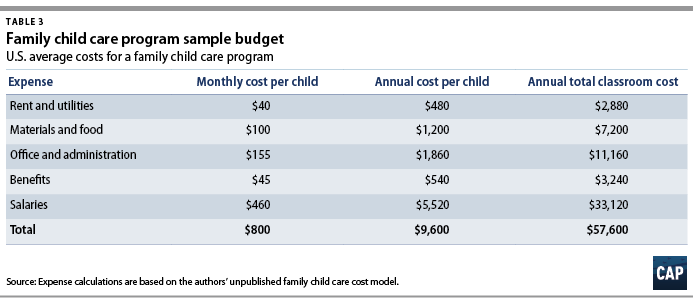
Baby Child Care Cost in the United States: A Comprehensive Guide
Introduction
The arrival of a new baby brings immense joy and responsibility. One of the most significant expenses parents face is the cost of child care. In the United States, child care costs vary widely depending on factors such as location, type of care, and the age of the child. This article provides a comprehensive overview of baby child care costs in the United States, exploring different types of care, average costs, and strategies for reducing expenses.
Types of Child Care
There are various types of child care available in the United States, each with its own unique characteristics and costs:
- In-Home Care: This involves hiring a nanny or babysitter to provide care in the child’s home. It offers flexibility and personalized attention but can be expensive.
- Center-Based Care: This refers to child care centers that provide care for multiple children in a structured environment. It offers socialization opportunities but may have limited availability and higher costs.
- Family Child Care: This involves a licensed provider caring for a small group of children in their home. It offers a home-like setting and can be more affordable than other options.
- Preschool: Preschools provide educational and developmental programs for children typically between the ages of 3 and 5. They can be a good option for preparing children for kindergarten but may have higher costs.
Average Child Care Costs
The average cost of child care in the United States varies significantly depending on the type of care, location, and age of the child. According to the Economic Policy Institute, the median annual cost of full-time center-based care for an infant is $12,300, while the median annual cost for a toddler is $10,500. In-home care costs can range from $15,000 to $25,000 per year, depending on the experience and qualifications of the caregiver.
Factors Affecting Child Care Costs
Several factors can influence the cost of child care, including:
- Location: Child care costs tend to be higher in urban areas compared to rural areas.
- Type of Care: In-home care is generally more expensive than center-based care.
- Age of the Child: Child care costs for infants are typically higher than for toddlers or preschoolers.
- Hours of Care: Full-time care is more expensive than part-time care.
- Additional Services: Some child care providers offer additional services such as meals, transportation, or extended hours, which can increase the cost.
Strategies for Reducing Child Care Expenses
While child care can be a significant expense, there are strategies parents can employ to reduce costs:
- Explore Subsidies: Many states offer subsidies to low-income families to help cover child care expenses.
- Consider Employer Benefits: Some employers offer child care assistance programs or discounts.
- Share Care with Family or Friends: Sharing care with a trusted family member or friend can reduce the cost of in-home care.
- Negotiate with Child Care Providers: Don’t be afraid to negotiate rates with child care providers, especially if you are willing to commit to long-term care.
- Look for Discounts: Some child care providers offer discounts for multiple children or for families with low incomes.
Financial Planning for Child Care
It is essential to plan financially for child care expenses. Here are some tips:
- Start Saving Early: Begin saving for child care expenses as soon as possible, even before the baby is born.
- Create a Budget: Include child care costs in your monthly budget to ensure you can afford the expense.
- Consider Tax Benefits: Some child care expenses may be eligible for tax deductions or credits.
- Explore Alternative Options: If traditional child care is too expensive, consider alternative options such as part-time care, shared care, or family care.
Conclusion
Child care is a significant expense for many families in the United States. The cost varies depending on factors such as the type of care, location, and age of the child. By understanding the different types of care available, the average costs, and strategies for reducing expenses, parents can make informed decisions about child care and plan financially for this essential expense. Remember, child care is an investment in the child’s development and well-being, and it is crucial to find a safe, nurturing, and affordable option that meets the family’s needs.
